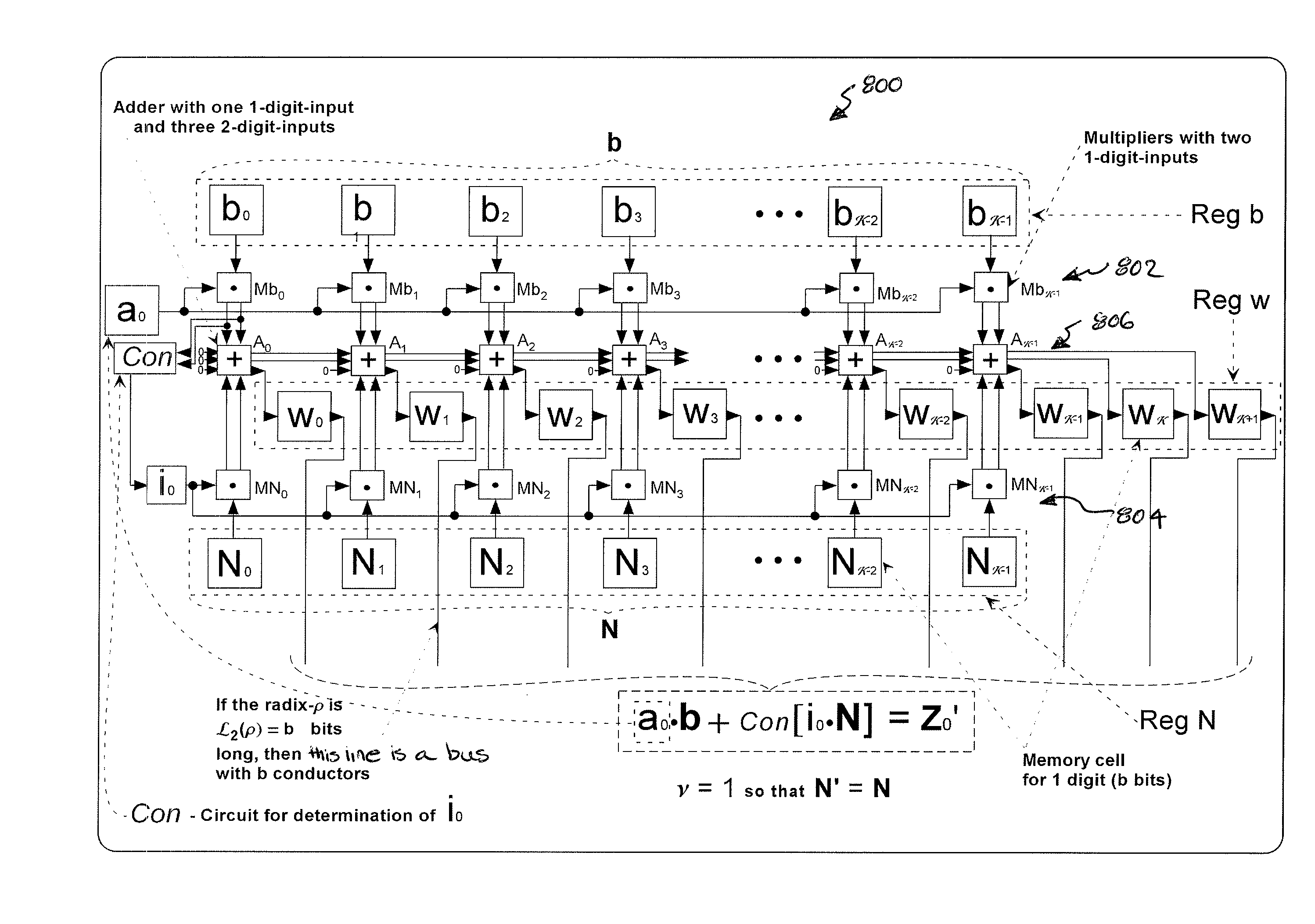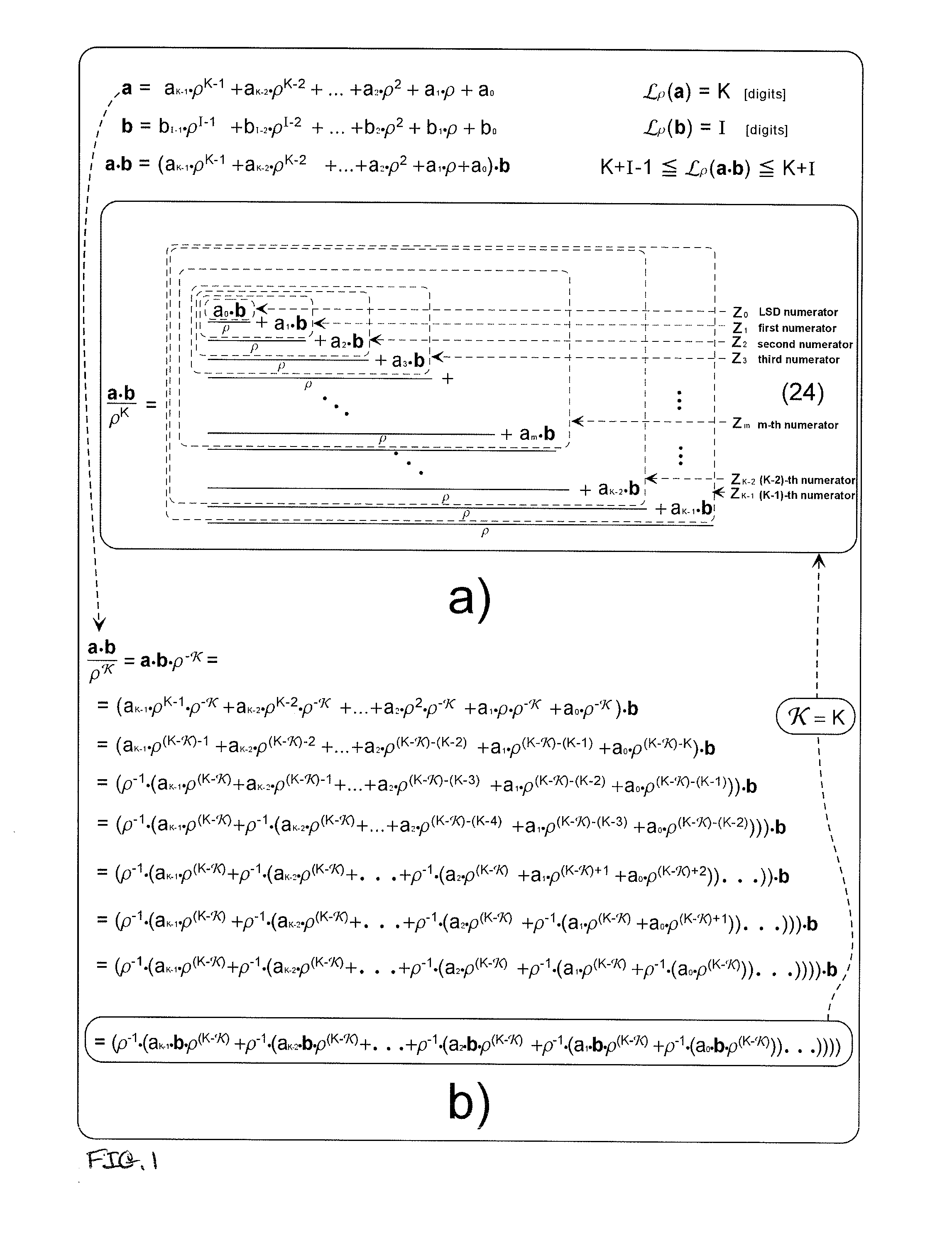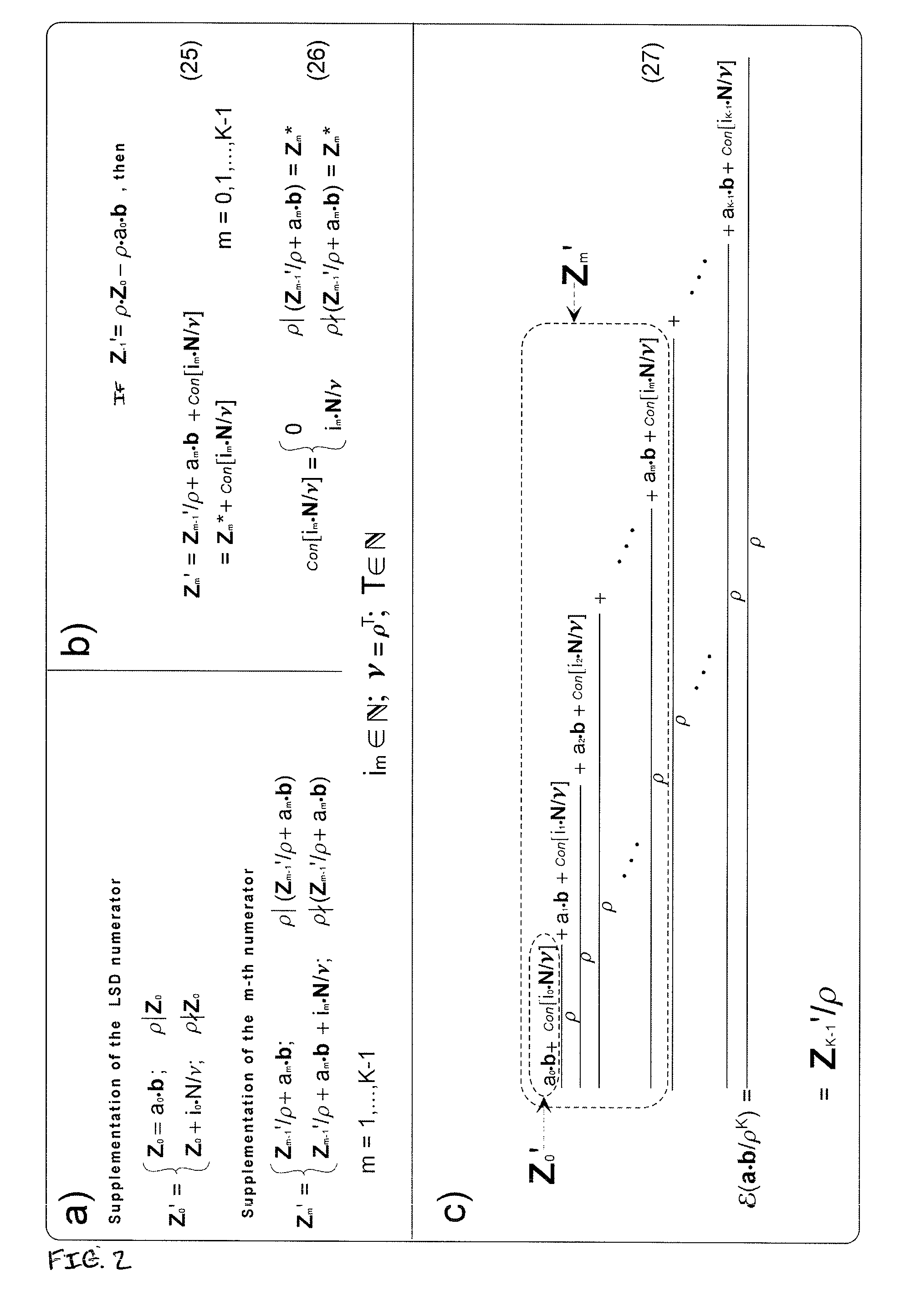Circuits for modular arithmetic based on the complementation of continued fractions
a modular arithmetic and fraction technology, applied in the field of modular arithmetic, to achieve the effect of increasing the demand on the memory
- Summary
- Abstract
- Description
- Claims
- Application Information
AI Technical Summary
Benefits of technology
Problems solved by technology
Method used
Image
Examples
example 1
[0120]Let ν=1, N′=N=(31)10; (Λρ(N)=μ=2) and Zm*=(358)10; (Λρ(Zm*)=ξ(m)=3). Since ρΦZm*(10Φ358), the not yet supplemented numerator Zm* is supplemented by adding up the supplementation term im·N==im·N′=em. To obtain an integer after the supplementation and dividing by ρ, im should be equal to 2, because 2·31=62 and 62+358=420=Zm′, so that Zm′ / ρ=42.
example 2
[0121]Let N=(35)10; and Zm*=(358)10. In this case the decimal number N′=N / ρ=(3,5)10 (ν=ρ=10) should be used since 0 or 5 are the possible LSDs for ν=1 the supplementation term im·N, and it is impracticable to supplement all possible values of Zm*. The non-supplemented numerator Zm* is supplemented by adding up the supplementation term im·N′=em since ρΦZm* (10Φ358). In order to obtain an integer after dividing by ρ=10, im should be selected as being equal to 12, because 12·3,5=42 and 42+358=400=Zm′, so that Zm′ / ρ=40.
[0122]Apart from condition (28) a further condition (30) is fulfilled, in order to be able to utilize the supplemented product continued fraction EN(a·b / ρK) for the calculation of the modular multiplication. For example, let m0, m1, . . . , mL (K−1≧mL>mL-1> . . . >m1>m0≧0; K−1≧L≧0) be the indices of those numerators in equation (27) in which the supplementation function (26) Con(im·N / ν) assumes values other than zero, and let im0, im1, . . . , imL be the corresponding sup...
PUM
 Login to View More
Login to View More Abstract
Description
Claims
Application Information
 Login to View More
Login to View More - R&D
- Intellectual Property
- Life Sciences
- Materials
- Tech Scout
- Unparalleled Data Quality
- Higher Quality Content
- 60% Fewer Hallucinations
Browse by: Latest US Patents, China's latest patents, Technical Efficacy Thesaurus, Application Domain, Technology Topic, Popular Technical Reports.
© 2025 PatSnap. All rights reserved.Legal|Privacy policy|Modern Slavery Act Transparency Statement|Sitemap|About US| Contact US: help@patsnap.com



